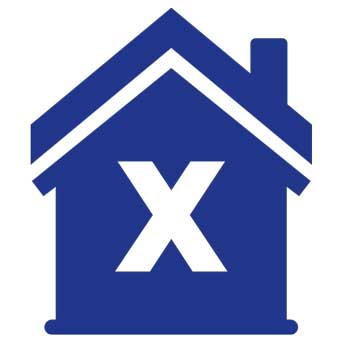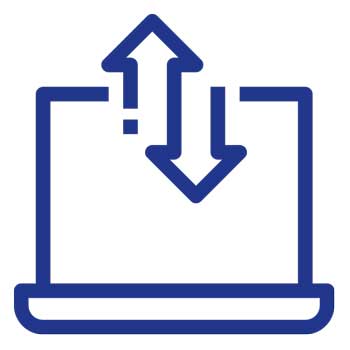Think you own your website domain name? Think again. Many people discover to their horror that their domain name is registered to someone else. Here’s how that happens and what you can do about it.
You have finally achieved the great Australian dream! You have bought a house, you have been happily living in it for a while; you regularly make payments … and then all of a sudden you discover you don’t own your house. That the person who handled the sale registered the deeds to your house in their name and they have now decided to claim it and sell it on to someone else.
Sound far-fetched, or the stuff of those trashy tabloid Current Affairs shows? It happens every day in thousands of businesses around the world – but the only thing is that it happens with virtual real estate and not bricks and mortar.
We often see this problem occur when our clients come to us to build a new website for them. We check out their domain name ownership and often find their domain name isn’t registered in their name.
Or we find that an old email address that no-one has access to was used (or that the email address was spelled incorrectly), or that while their old web designer had used the correct details, they hadn’t give our clients any login details to the domain name registrar, so the client can’t access their own property.
What this means is that the client doesn’t own their online real estate.
At least once every couple of months, we have to head down a domain name recovery process for a new client, which is stressful and potentially very expensive if lawyers have to be involved.
How Domain Name Ownership Gets Messed Up
Your website URL or domain name is your virtual real estate and is as precious as your bricks and mortar building. However, there are loads of ways that your domain name can legitimately end up being owned by someone outside your business.
Read this to find out what is a domain name.
Most people don’t know much about domain name registration – they just trust their web designer to register their domain name (URL) on their behalf. However, if the web designer by malice, ignorance or simple oversight neglected to transfer the ownership to you once registered, you may discover that your domain name is actually registered in the name of the web company and not yours.
Another common mistake we see is if you had the office admin register your domain name online for you, you may find that he/she inadvertently registered the domain in their name and not your company name, not realising the legal implications.
Another way that domain names can get messed up is if you have changed company structures or partnerships – you may discover that your domain name is registered to a defunct trading entity.
You can also accidentally or deliberately let a domain name lapse, and not realise the consequences. Domain names and tattoos are the same – they need to be for life!

Why Losing Ownership of Your Domain Name is a Problem
In the online world, domain name registration means the person who legally owns the rights to that name. If your domain name is not registered to you, you have no legal rights to use that name.
If your domain name ownership or access to your domain name is held by a disgruntled employee, negative business associate or unhappy (or vanished) web developer, you are leaving your business wide open to a whole lot of pain.
These can include the ownership of the domain name being transferred and sold to another party; parallel websites installed with the addition of malicious
Also, your domain name is valuable intellectual property (IP). If you wish to sell your business, it has value and needs to be transferred with the sale of your business. If you don’t have control of that asset, it will affect your sale price and process.
If you can’t get your domain name ownership back, you will have to redo all your branding, set up new email accounts and a new URL for your business, and start at square one with your SEO and Google.
Taking Back Ownership of your Domain Name
If your domain name is not registered to you and you want to keep on using that domain name, you need to find a way to get your domain name legally transferred back to you.
Depending on the jurisdiction, the process of changing the registration can be quite complex and convoluted.
First – check out who is listed as the registered owner of the domain.
https://whois.auda.org.au/ (for.au domains)
https://lookup.icann.org/ (for all types of domains)
(Just remember that that owner’s details may be obscured by services such as WhoIsGuard, that are designed to protect online privacy.)
If you are not the registered owner of your site, you need to take action to reclaim control.
Start with a friendly discussion with the registered owner (if you can track them down) to see if it can be amicably transferred back to your control.
If you can find the person, in most cases the person will transfer the ownership back to you, but we have had more than a few cases where lawyers had to get involved or additional money has had to change hands with the person who owns the registration.
If you can’t find the person who holds the registration, and the contact details for the account are incorrect, then the situation becomes more challenging and it can take a combination of detective work, mountains of paperwork and legal involvement to be resolved.
Transferring Ownership If You Can Access The Domain Name Registrar Website
Generally, .com, .net, .org, .mobi sites etc only require the relevant boxes in the registration section of the domain name registrar to be amended.
However, if your domain name registrar is Australian-based they may require you to go through the same internal processes (and fee payments) that they require for transferring ownership/registration for .au domain names.
.au Domain Name – Transfer of Ownership
.au sites are governed by quite complex legal
Although auDa doesn’t charge any fees for the transfer of ownership process, all Australian domain name registrars charge fees ranging from $18 – $300 per ownership transfer, with $150-$180 the average fee.
If your .au domain name is registered to your web designer and not to you, and they are not willing to transfer it to you, or if they have disappeared and you can’t contact them, you can lodge a formal complaint with the auDa where you will have to argiue why you believe that the registrant is not eligible to hold the domain name license for your name.
Unfortunately, .au domain names are allocated on a ‘first come – first served’ basis, and having a trademark, registered business name or company name does not automatically give you rights over the domain name.
A dispute before auDA costs upward of $2000 in lodgement fees (not including your legal fees which is another great reason not to have to get to that point.) https://www.auda.org.au/policy/au-dispute-resolution-policy-audrp-2016-01

Domain Name Ownership Transfer Tips & Tricks
If you have agreement and access to your domain registrar, and if you want to transfer your domains to the correct business entity, and want to save a few $ in the process there are a few strategies you can adopt. (Let’s face it – multiple domains at $180 per domain transfer really adds up financially),
1) For non .au domains – first transfer the domain name to a non-Australian domain name registrar. You will have to renew the domain for an additional year, but once that has gone through you can then amend the details from the domain name management panel. You can then either choose to leave the domain registration with NameCheap or transfer it back to an Australian domain name registrar at a later date.
2) For .au domains – first transfer the relevant domain name from your domain name registrar to one of the registrars that charge lower ownership transfer fees.
Then use the transfer of ownership option from their management panel and pay the cheaper rate per transfer, compared to the standard $150-$180 of other domain name registrars. The advantage of Netfleet is it is all done online and doesn’t require thousands of scanned forms.
Once the process is completed, you can transfer the names back to your preferred domain name registrar at a later date.
Of course, if in any doubt, speak with your lawyer (if they understand IT), or a specialist IT Lawyer and they will help you walk through the legal side of things; or your new web host if you need help with the technical side of things.
Last thoughts
You treat the deeds to your home with respect. You need to do the same for your online home. Check your domain name registration and keep all your contact details current. If you lose ownership of your online presence, your business may also disappear with it.





